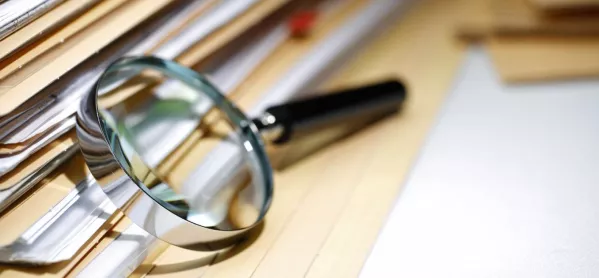Schools with “more pupils from deprived backgrounds” are still less likely to be judged “good” under Ofsted’s new inspections than those serving more affluent areas, the inspectorate has admitted.
Ofsted’s national director of education, Sean Harford, has said there will be disappointment that the situation has not changed under its new Education Inspection Framework (EIF).
When Ofsted was developing its new inspections with an increased focused on curriculum and less focus on results, chief inspector Amanda Spielman had said that it could be fairer to schools in disadvantaged areas.
Background: Schools in deprived areas ‘don’t get Ofsted recognition’
Head’s view: Achieving a ‘good’ in a deprived area was brutal
Ofsted: Inspection changes could help schools in deprived areas
However, in a blog published this morning, Mr Harford said that, in the inspections carried out under the new framework so far, schools with more poor pupils were still less likely to be rated as “good”.
He said: “Some will be disappointed to see that, so far, schools with more pupils from deprived backgrounds are still less likely to be judged ‘good’ than those from more affluent backgrounds under the EIF [education inspection framework], just as they were under the last framework.
Ofsted and disadvantaged schools
“There’s currently no clear difference in the proportion of schools judged ‘outstanding’ in deprived areas, but the overall numbers are small.
“That’s not to say it’s all bad news - some of these schools are doing very well. Of the schools with pupils from the most deprived quintile that we have inspected to date under the EIF, 64 per cent have been rated as ‘good’ or ‘outstanding’, which is great to see.”
The blog also reveals a slight drop in overall inspection grades under the new framework.
In the past academic year, 80 per cent of schools were rated as “good” and “outstanding”. Since September, 77 per cent of the schools inspected under the EIF have been judged to be “good” or “outstanding”.
Ofsted has previously committed to keeping the grade profiles steady with the introduction of its new EIF.
Mr Harford said: “This is based on just 840 full inspections and section 8 inspections of previously ‘good’ and ‘outstanding’ non-exempt schools, so we shouldn’t read too much into that.
“The grade profile tends to vary each year and this year is no different. It’s also early days and we could see the gap close over time.”
Ofsted’s new inspection framework was introduced this September.
The inspectorate has replaced teaching, learning and outcomes and attainment as separate inspection judgements with a new quality of education grade, which looks in detail at the school curriculum.




